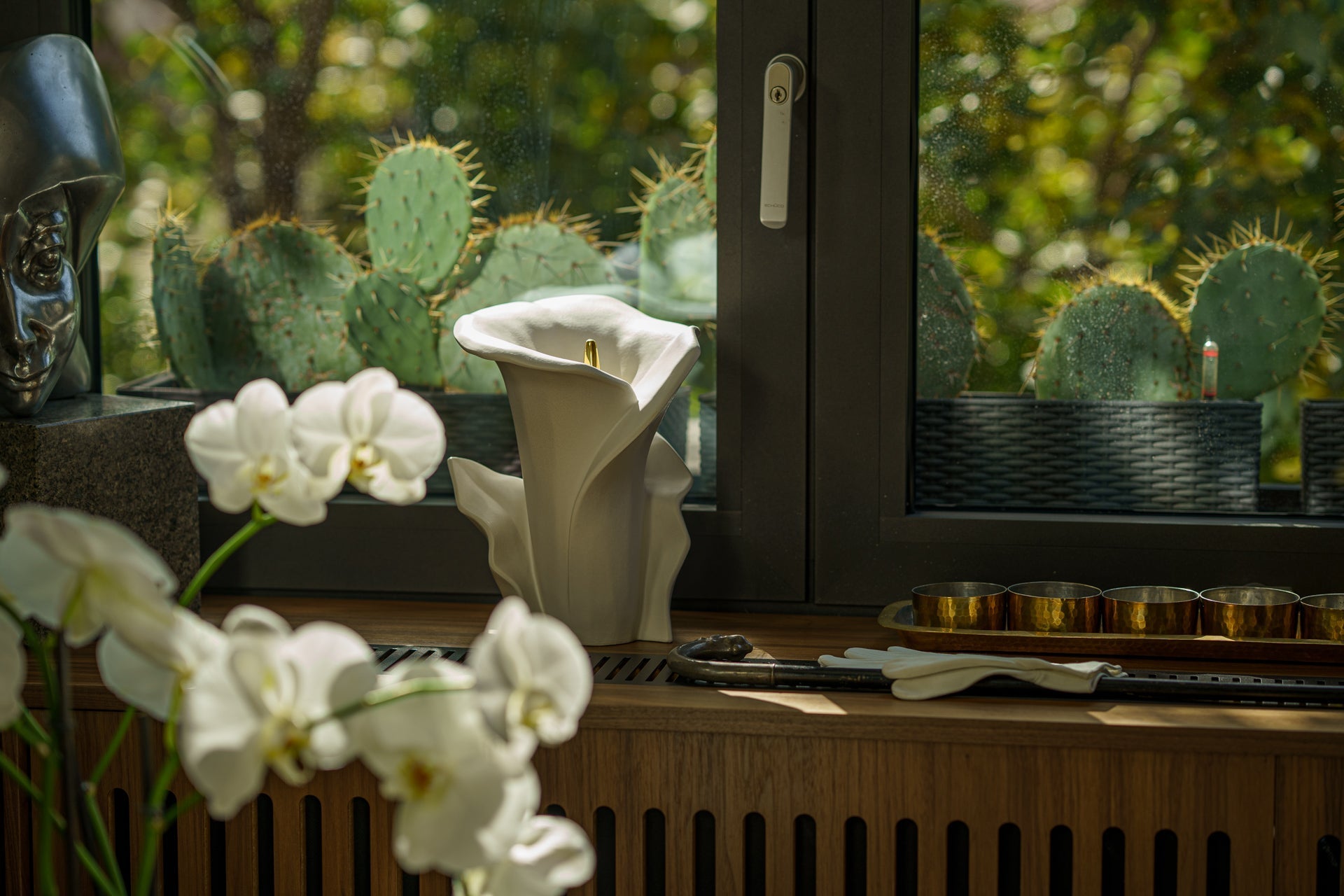In a world increasingly shaped by sustainability and environmental stewardship, more people are seeking memorial options that reflect their values—even in how they honor their loved ones. Eco-friendly urns are rising in popularity as meaningful, sustainable alternatives to traditional cremation vessels. These urns offer a respectful return to nature, blending beauty with biodegradability.
At Pulvis Urns, we understand the need for remembrance that’s not only deeply personal but also kind to the planet. Whether you’re looking for biodegradable urns for water burial, plantable urns to grow living tributes, or elegant clay urns that decompose naturally, we’re here to help you choose a sustainable farewell.
Why Choose an Eco-Friendly Urn?

Eco-friendly urns offer a thoughtful way to honour your loved one while minimizing your environmental impact. They are designed to naturally return ashes to the earth or water, aligning the memorial with life’s natural cycles. In a time when sustainability matters more than ever, green urns reflect values of conservation, renewal, and gentle remembrance.
Beyond environmental benefits, choosing a sustainable urn is also a deeply symbolic gesture—one that says goodbye without causing lasting harm to the planet. It transforms grief into a powerful act of restoration.
Reducing Environmental Impact
Conventional urns are often made from materials like metal, synthetic resins, or heavy ceramics that don’t decompose easily remaining in the environment indefinitely. Eco-friendly urns are crafted from biodegradable materials like natural clay, salt, paper, cornstarch, or bamboo, which safely return to the earth or water.
By selecting an eco-urn, you actively reduce your carbon footprint and support the shift toward green cremation and sustainable burial practices.
Natural Final Return
Eco urns are designed to decompose gracefully, completing the life cycle by allowing ashes to blend with soil or dissolve into water. Many families find comfort in this return-to-nature concept, as it reflects peace, regeneration, and ecological harmony.
Ethical & Aesthetic Considerations
Choosing an eco urn doesn’t mean compromising on beauty or craftsmanship. Today’s sustainable urns combine artisan aesthetics with environmentally responsible materials. Whether minimalist or intricately designed, they honour a loved one’s legacy with dignity and elegance.
Types of Eco-Friendly Urns
There is a growing variety of sustainable urns to fit every need and ceremony style:
- Biodegradable Urns: Made from paper, clay, sand, or salt, these break down in natural elements, ideal for burial or scattering.
- Plantable Urns: These combine ashes with seeds to grow trees or plants—turning remembrance into regeneration.
- Water Burial Urns: Crafted from water-soluble materials like gelatin or recycled paper, they dissolve gracefully in lakes, rivers, or seas.
- Sustainable Keepsake Urns: Smaller versions of eco urns designed to hold a portion of ashes, perfect for family sharing or home tributes.
Each type supports a memorial that is beautiful, responsible, and aligned with your values.
Biodegradable Funeral Urns
Crafted from water-soluble paper, salt, sand, or unfired clay, these urns decompose naturally when buried in soil or submerged in water. They're ideal for earth burials or water-based memorial ceremonies.
Seed & Plantable Urns
These unique urns are embedded with tree or flower seeds, allowing you to plant a living tribute using the ashes. Over time, your loved one’s memory lives through a blooming tree or garden—symbolizing growth, life, and healing.
Water-Burial & Aquamation Urns
Specifically engineered to dissolve in water within minutes to hours, these urns support water-based scattering ceremonies or alkaline hydrolysis (a sustainable cremation alternative). They are made from materials like sand, gelatin, or paper pulp.
Sustainable Keepsake Urns
For families who wish to share ashes or keep a small portion in a personal space, keepsake urns offer a compact, eco-friendly solution. They are often made with biodegradable paper clay or wood and come in artistic shapes suitable for home display.
Materials & Their Environmental Benefits

Eco urns are crafted with natural, non-toxic materials that decompose cleanly and leave no lasting environmental footprint:
- Natural Clay & Earth-Based Materials: These disintegrate gradually and return minerals to the soil.
- Plant Fibers & Bioplastics: Derived from cornstarch, bamboo, or recycled paper, these degrade quickly in the right conditions.
- Mycelium & Seed Paper: Support regenerative functions, enriching the soil and fostering new life.
- Non-toxic Finishes: No synthetic dyes or glazes—ensuring safety for plants, water, and wildlife.
These materials are thoughtfully selected to meet both aesthetic standards and eco-friendly goals.
Natural Clay & Non-Toxic Glazes
Unfired or low-fired natural clays break down gradually without releasing harmful substances into the environment. Glazes used in eco urns are water-based and non-toxic, making them safe for soil and aquatic ecosystems.
Plant-Based Fibers & Resins
Biodegradable urns often use cornstarch, bamboo fibers, recycled paper, or cellulose-based resins. These materials degrade quickly and require minimal energy to produce, aligning with low-impact manufacturing practices.
Seed-Infused & Mushroom Mycelium Options
Innovative green urns are now incorporating mycelium (fungus roots) and seed paper, turning the burial process into a regenerative act. These materials nourish the soil and support reforestation—creating life from loss.
How to Choose the Right Eco Urn

Choosing the ideal urn starts with your values, ceremony plans, and the wishes of your loved one:
- Purpose: Will the urn be buried, scattered, displayed temporarily, or used to grow a living memorial?
- Material: Match the urn’s biodegradability to your environment—clay for slow soil release, salt or paper for quick water dissolution.
- Size: Standard, companion, and keepsake sizes ensure you can accommodate full or partial remains.
- Design: Choose from sculptural, minimalist, or nature-inspired styles that reflect your loved one’s personality.
Always ensure the urn is verified biodegradable and ethically made. At Pulvis Urns, we offer full transparency and guidance for choosing with confidence.
Biodegradability & Decomposition Rate
Consider how and where the urn will be used—burial, scattering, water placement, or display. Water-soluble urns dissolve quickly, while plantable or clay urns degrade slowly over months. Match the material to your ceremonial plans and timeline.
Size & Design for Purpose
Eco urns come in full-size (to hold all cremated remains), companion urns (for two people), or keepsake versions (small portions). Choose a design that resonates emotionally—whether that’s a nature motif, organic shape, or symbolic sculpture.
Certification & Transparency
Trust urns that meet environmental standards like ASTM D6400 (for compostability) or are explicitly labeled as biodegradable. At Pulvis Urns, we prioritize full material transparency and artisan production to give you peace of mind.
Caring for an Eco-Friendly Memorial
A memorial urn for ashes is a timeless way to honor and preserve the memory of a loved one. Designed with care and dignity, urns provide a meaningful resting place, whether displayed at home, placed in a columbarium, or buried. They serve as a lasting tribute, symbolizing love, remembrance, and respect. Eco urns are designed to integrate with nature, but a little care goes a long way:
- Pre-Burial Storage: Store in a dry, shaded area to prevent premature decomposition.
- Planting Tips: Use nutrient-rich soil, water sparingly at first, and protect the area from heavy foot traffic while the urn breaks down.
- Scattering Prep: If scattering by water, check local guidelines and wait for calm conditions. Ensure the urn dissolves safely and fully.
If you’ve chosen a memorial urn for ashes meant for display before burial or scattering, many eco urns can be kept temporarily in the home. Look for sealed designs or moisture-resistant finishes that protect the contents during the holding period.
Planting & Scattering Guidelines
When using a plantable urn, choose native trees or flowers for optimal growth. Ensure the soil is nutrient-rich and not treated with chemicals. For water burials, comply with local regulations—many allow biodegradable urns if placed at least 3 nautical miles from shore.
Seasonal & Environmental Considerations
Weather can affect the speed of biodegradation. Urns decompose faster in warm, moist soil than in cold or dry climates. Water urns dissolve more quickly in moving or warm water than in still, cold lakes.
Multi-Urn & Keepsake Options
Families often choose to divide ashes among several urns—allowing multiple family members to participate in ceremonies across different locations. Keepsake urns offer a compact and respectful way to honor shared remembrance.
Conclusion & Call to Action
Choosing an eco-friendly urn is more than a practical decision—it’s a conscious tribute to a life well-lived and a commitment to the earth we all share. By selecting biodegradable or sustainable urns, you honor your loved one while contributing to a more compassionate, eco-conscious legacy.
At Pulvis Urns, we’re proud to offer a curated collection of green urns that blend artistic craftsmanship with environmental responsibility. From plantable memorials to water-burial designs, every piece tells a story of life, love, and sustainability.
📍 Ready to find the perfect eco-urn? Browse our collection of sustainable cremation urns or contact us for personalised support.

FAQs: Eco-Friendly Urns & Burial Options
Q1: What happens to biodegradable urns over time?
Biodegradable urns naturally break down in soil or water, returning to the earth without leaving synthetic residue. The process can take from hours to several months, depending on the environment.
Q2: Can I plant a tree with the ashes using an eco urn?
Yes, many plantable urns are designed to be mixed with ashes and soil to grow trees or flowers. Make sure to follow planting instructions and choose a species that suits your region.
Q3: Are eco urns as durable as traditional urns?
Eco urns are durable enough for short-term display or transportation but are not intended for long-term indoor storage unless kept in dry, cool environments. Some are reinforced for temporary display before burial.
Q4: Can I use an eco urn for a home memorial?
Absolutely. Many eco-friendly urns are elegantly crafted and suitable for display on shelves or altars before being planted or scattered. Just keep them away from high humidity or direct sunlight.
Q5: How do I know an urn is truly sustainable?
Look for full transparency in materials, compostability or biodegradability certifications, and production processes. At Pulvis Urns, all eco urns are made with verified natural ingredients and minimal environmental impact


Partager:
Mindfulness and Meditation for Coping with Loss
How to Properly Care for Your Cremation Urn